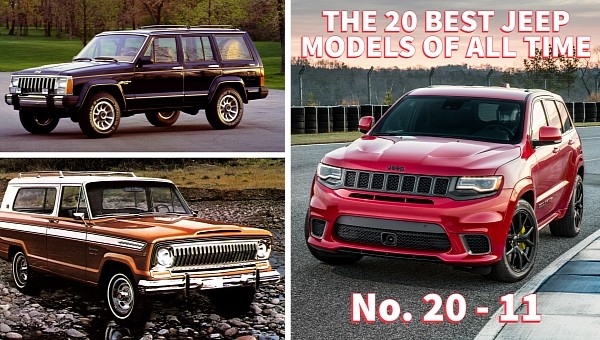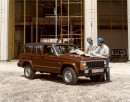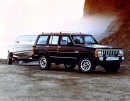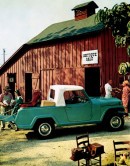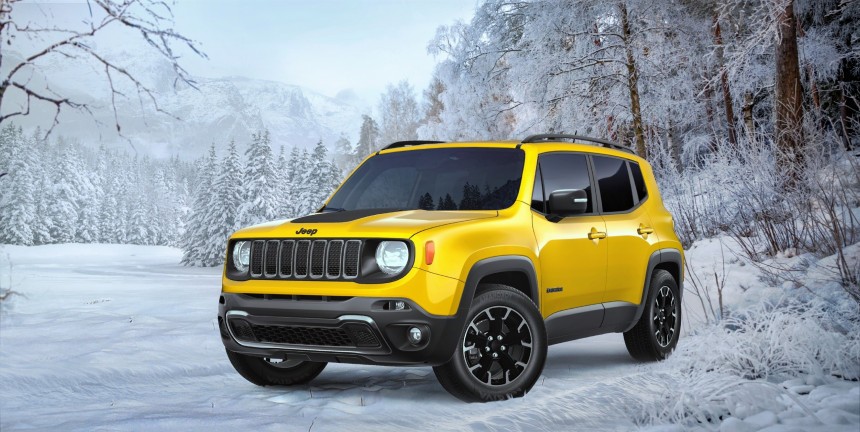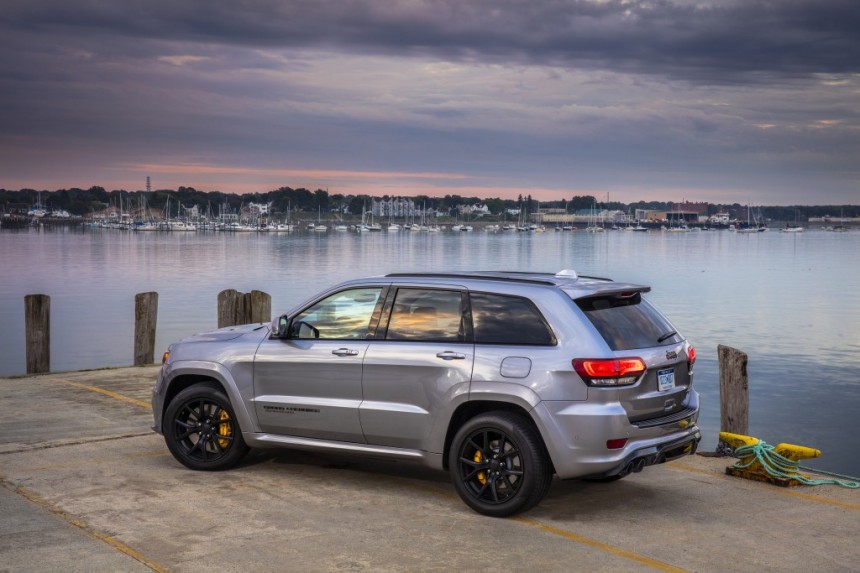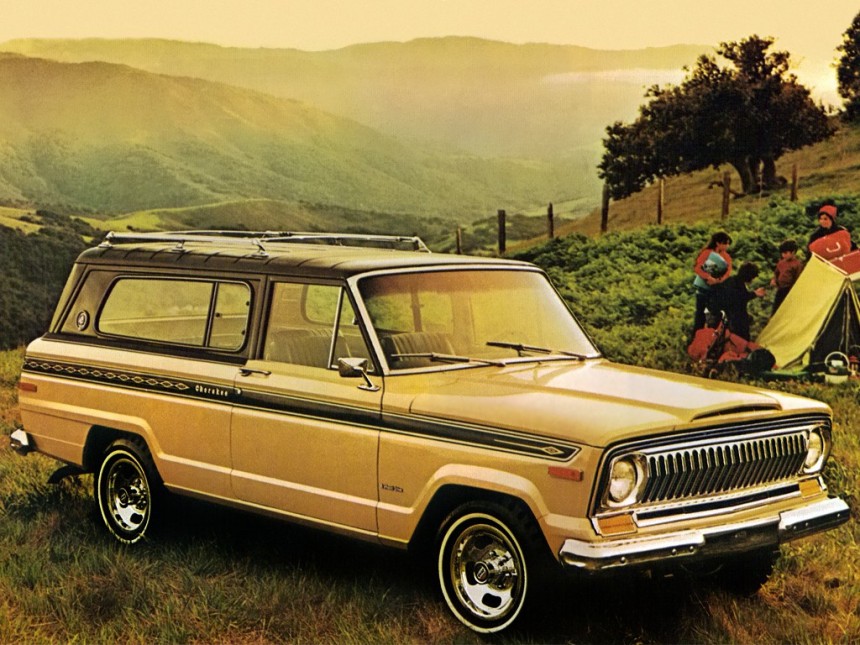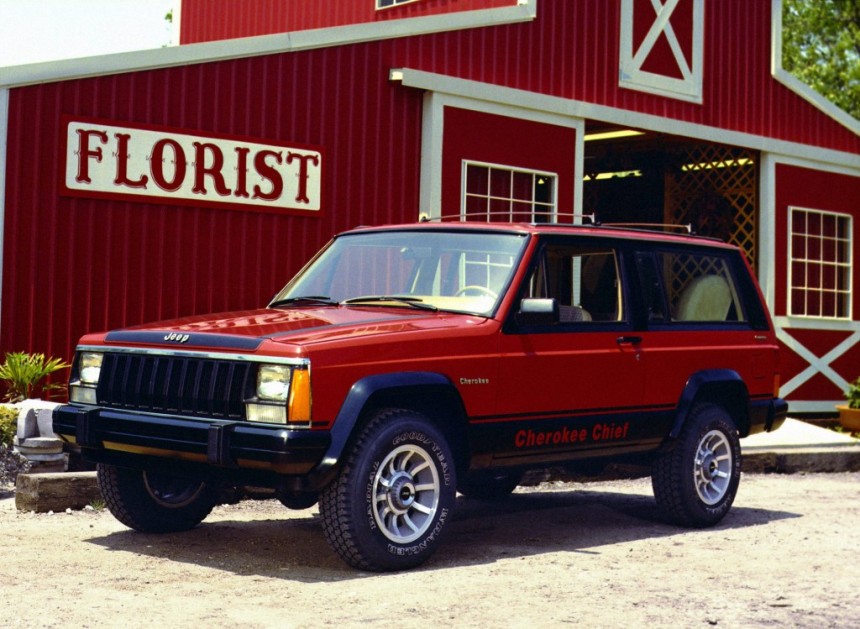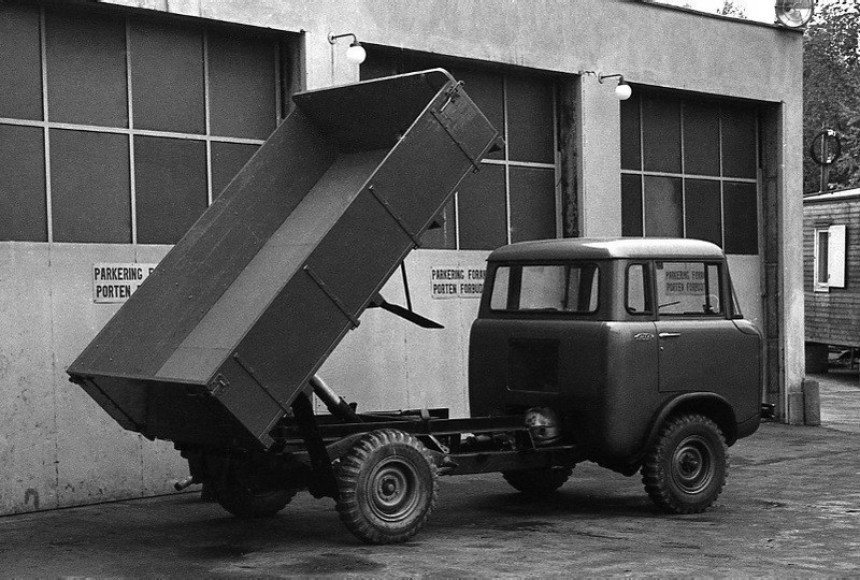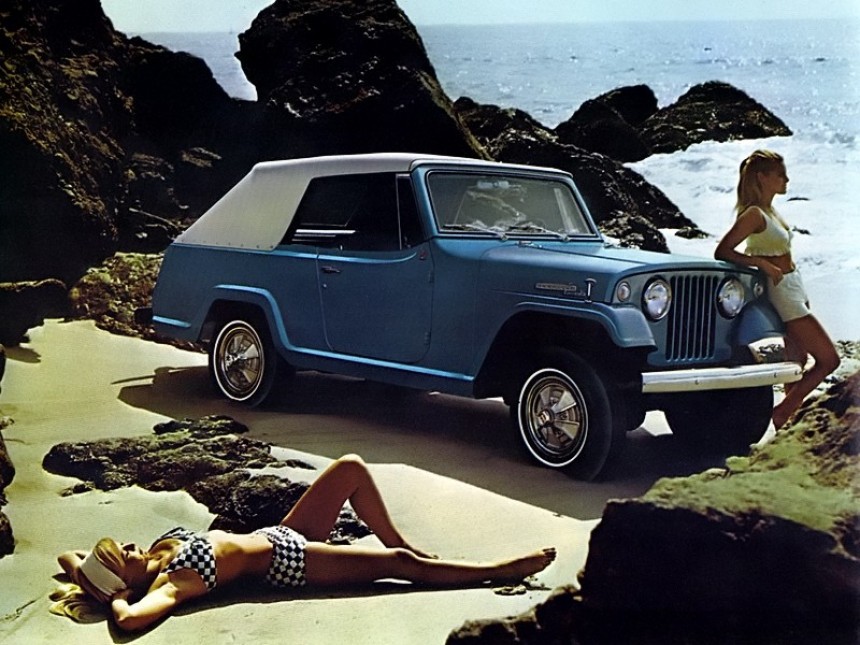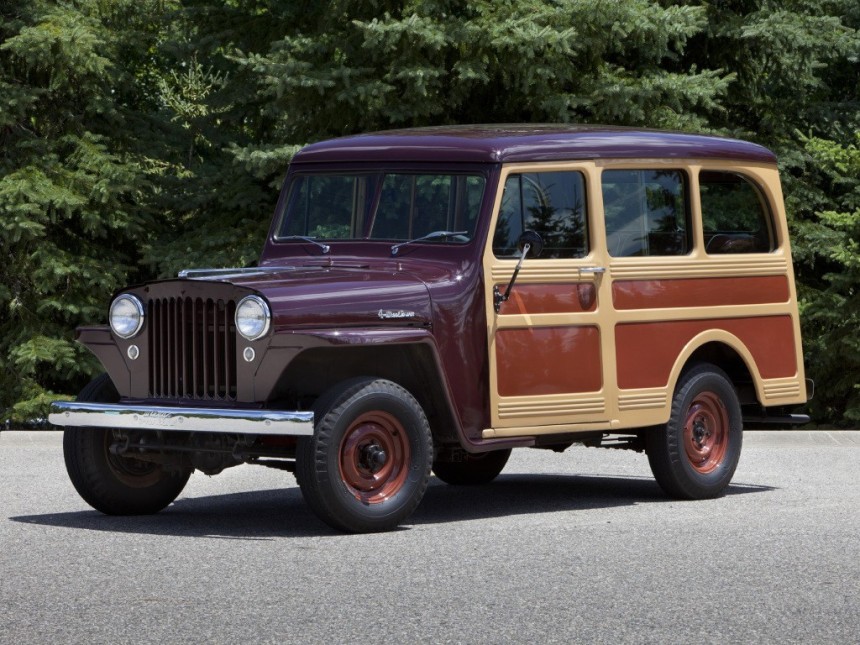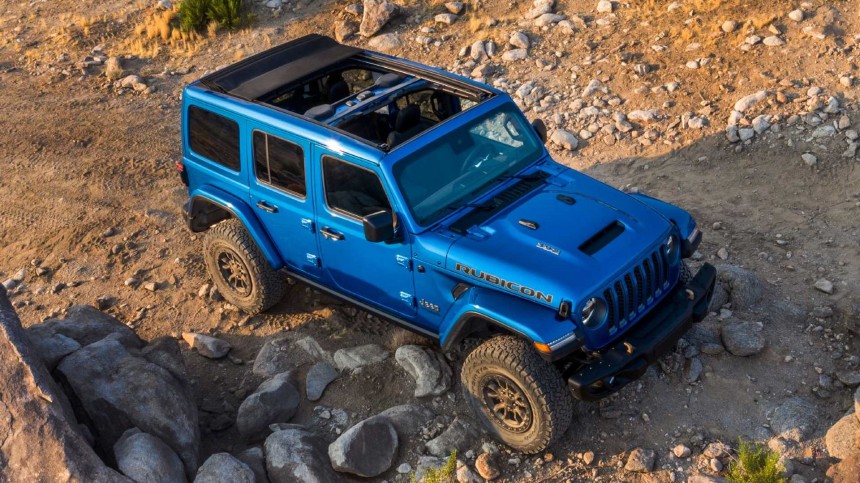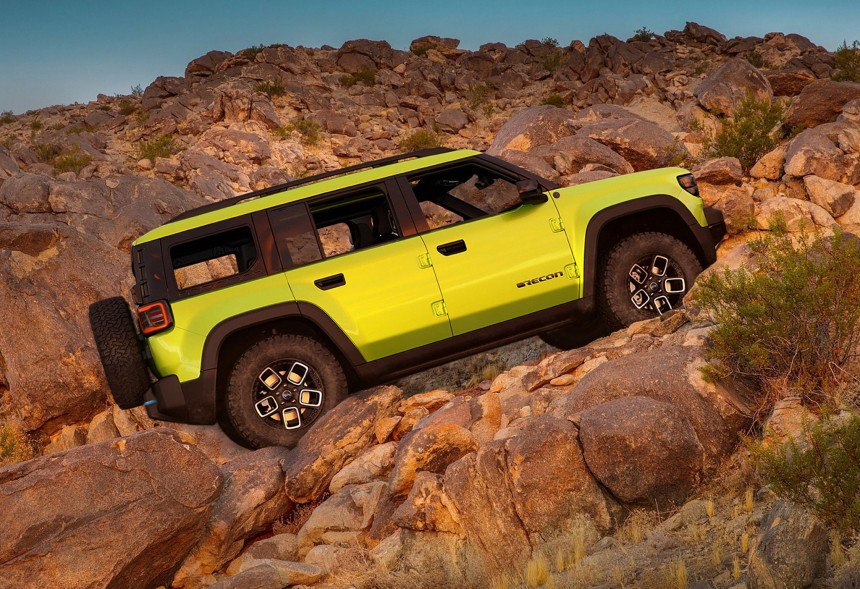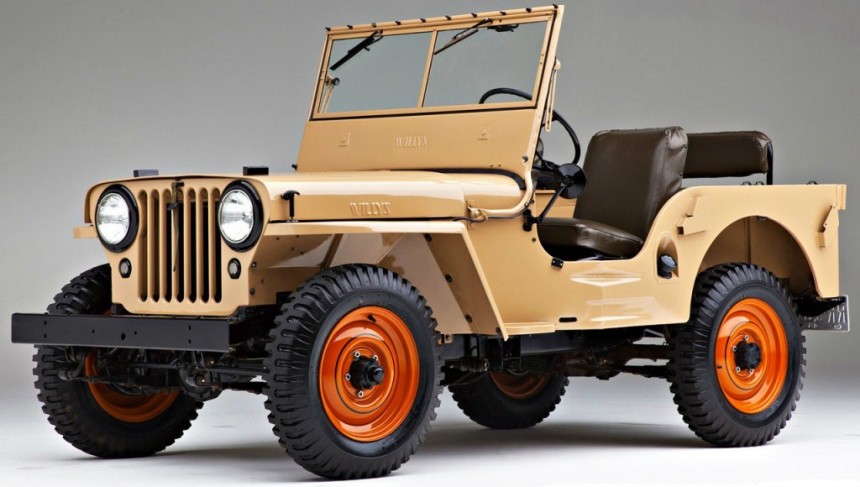One of the most recognizable automotive brands out there, Jeep is more than simply a name. It’s a way of life, a life of relative abundance and comfort that wouldn’t have been made possible without the Jeep’s military upbringing in WWII as a quarter-ton command reconnaissance truck used by the U.S. and the Allies.
Born out of necessity, the Willys MB military vehicle we all know and love was preceded by the Willys MA and the grandpa of all Jeep currently in existence, the Quad of 1940. Believe it or not, the first of two prototypes that would morph into the MA and subsequent MB took a scarcely believable 49 days to design and build. Its creator is the brilliant Karl Probst, recruited by the peeps at American Bantam in 1940 specifically for this job.
Derived from the Willys MB, the Civilian Jeep rolled out in 1944 as the CJ-1, but sales wouldn’t pick up until 1945 with the introduction of the CJ-2A, which ran until 1949. The Jeep brand we know today started taking shape in the 1940s with the introduction of other models, such as the Wagon, Truck, and Jeepster.
All three made our list of 20 best Jeep models of all time, a two-part feature that kicks off with numbers 20 to 11. The first part brings together both old and new Jeeps, starting with the hideously underrated Renegade.
Codenamed BU, the Renegade entered production in 2014 for the 2015 model year to a rather mixed reception. Although it’s undeniably a Jeep inside and out, the B-segment proportions, unibody construction, and not being made in the United States of America made it a – dare I say it - pariah in the eyes of many enthusiasts.
The naysayers have a point, although said naysayers also have to remember that Jeep needs to sell as many vehicles as possible. A good chunk of the resulting profit goes into the development of the “only true Jeep” produced at press time, the body-on-frame Wrangler.
Despite being extremely different from the solid-axle Wrangler, the Renegade can hold its own off the beaten path like a boss. The AWD-only Trailhawk is an incredible little off-roader that doesn’t mind getting dirty thanks to a 4-Low mode sporting a 21:1 crawl ratio.
The most powerful Jeep ever, as well as the most powerful and quickest SUV when it was launched in 2018, the Grand Cherokee Trackhawk takes its mojo from a 6.2-liter supercharged V8. Marketed as the Hellcat engine, the cam-in-block powerplant cranks out 707 ponies at 6,000 revolutions per minute and 645 pound-feet (875 Nm) of torque at 4,800 revolutions per minute.
Designed for both a textbook launch and corner carving, the WK2-series Grand Cherokee Trackhawk stops on a dime as well, thanks to 15.75-inch front brake rotors squeezed by six-piston calipers. They’re joined by 13.78-inch rotors and four-piston calipers out back.
Riding one inch lower than non-SRT models, the Grand Cherokee Trackhawk isn’t going to be repeated. Stellantis, the cross-border merger between Fiat Chrysler Automobiles and the French at Groupe PSA, is focused solely on electrified vehicles. Although the Trackhawk nameplate may be revived for a future performance variant, don’t expect a Hellcat under the hood.
Based on the four-door Wagoneer, the two-door Cherokee was aimed at a different demographic. The youngster, that is, namely the younger demographic in the market for a capable recreational vehicle.
Blessed with the Gladiator’s grille, the Cherokee featured sporty details both inside and out. Then owned by the American Motor Corporation, the Jeep brand offered a wide-track option with fender flares and 3.0-inch wider axles. A four-door version would be introduced by 1977 to further raise its appeal.
The Cherokee is also historically relevant for introducing the term “sport utility vehicle” in the advertising brochure for the 1974 model year. Not even a decade earlier, Ford used “sports utility” to advertise the two-door pickup version of the first-gen Bronco.
The XJ revolutionized the 4x4 segment in many regards. The first American off-roader to feature unibody construction also happens to be the first compact four-door SUV and the first one to boast full-time 4x4 system with shift on the fly. Make no mistake about it; the XJ-series Cherokee was undeniably revolutionary.
The first all-new design from the Jeep brand since the SJ-series Wagoneer launched in 1962 for the 1963 model year, the XJ was designed to be more frugal than its predecessor as well. As a brief refresher, the energy crisis of 1979 forced the automotive industry to develop more frugal passenger cars and light-duty vehicles.
American Motors Corporation reportedly spent $250 million to design and tool up for series production of the XJ. That may not seem like much by current automotive development standards, but bear in mind that’s approximately $1.15 billion adjusted for inflation.
Workhorse by its very nature, the FC series was designed by Brooks Stevens, one of the most prolific designers of all time. The SJ-series Jeep Wagoneer, Oscar Mayer Wienermobile, Mercedes-Benz SSK-inspired Excalibur, Hydra-Glide Harley, and Volkswagen 412 are the automotive highlights from his fruitful career.
Although not the first cab-over truck in the world, not even in America, the Forward Control looked unlike any other cab-over truck due to its helicopter-look cabin. Numerous versions and conversions were offered from 1956 through the mid-‘60s, with production topping nearly 10,000 examples of the breed in 1957.
Also made in India and Spain under license from Willys Motors, the Forward Control proved to be a commercial flop. Some 30,000 were produced, making the FC a collectible for Jeep and truck enthusiasts alike.
Not to be confused with the Willys MB copycat manufactured in India by Chinkara Motors, the Jeepster enjoys the rather obscure title of being the last phaeton-style open-bodied vehicle made by a U.S. automaker. Designed by Brooks Stevens, the VJ series was better equipped and comfier than all Jeeps before it.
Approximately 20,000 were assembled between 1948 and 1950, all of them sporting a three-speed manual with overdrive. Powertrain choices included the 2.2-liter four-cylinder Go Devil, the 2.2-liter four-cylinder Hurricane engine, 2.4-liter straight-six Lightning, and the more potent 2.6-liter straight-six Lightning engine.
Kaiser Jeep resurrected the Jeepster as the Jeepster Commando in 1966 as a 1967 model. Codenamed C101, then C104 for the Jeep Commando, the second coming sold much better than the original. It was offered in four configurations: two-door pickup truck, roadster, convertible, and metal-topped station wagon.
Speaking of wagons, the Jeep wagon can trace its roots back to the Willys Wagon from the 1940s. The first American all-steel station wagon was originally known as the model 463 Jeep Station Wagon. Despite being made from metal, it sports three-tone exterior paintwork that simulates the oh-so-classy woodie look.
The fold-down tailgate is a highlight in and of itself, and the simple fact that the Willys Wagon wasn’t prone to weathering made it a huge commercial hit. Just around 300,000 units were produced through 1964. Leftover 1964 models were equipped with 1965 vehicle identification numbers by Kaiser Jeep dealers.
Considered the first series-production sport utility vehicle, the Willys Wagon originally came with rear-wheel drive. Four-wheel drive was added in 1949, and the Willys Wagon would soldier on until 1977 in Brazil, where it was produced under license by Ford.
The most powerful and quicker Wrangler ever doesn’t sport the 6.2-liter supercharged Hellcat V8 HEMI engine of the Grand Cherokee Trackhawk. It uses the naturally-aspirated 6.4 from the HEMI family, a 392-ci colossus that Chrysler refers to as the Apache engine.
With 470 horsepower and 470 pound-feet (637 Nm) of torque at its disposal, the Wrangler Rubicon 392 needs 4.5 seconds to reach 60 miles per hour (97 kilometers per hour). The quarter-mile run ends in 13 seconds, which is tremendously fast for such a heavy vehicle with body-on-frame construction and off-road tires.
The ultimate expression of the Wrangler Rubicon 392 is the Xtreme Recon package, which includes 35-inch tires that made the off-road SUV even more capable off the beaten path. The package also includes beadlock-capable wheels, a 1.5-inch lift, a reinforced swing gate, and 4.56 gears as opposed to the standard 3.73:1s.
Scheduled to enter production in 2024, the Recon isn’t the first series-production electric Jeep. But it’s the first one with proper off-road chops. Based on the STLA Large platform, the Recon isn’t a modernized version of the JL/JLU Wrangler despite its removable doors. It actually sports independent suspension all around.
Heavily inspired by the Wrangler, this fellow takes its name from the limited-edition Rubicon Recon from the JK series and Xtreme Recon package. To be displayed in series-production form in the latter part of 2023, the Recon will be offered exclusively as an EV.
Jeep brand chief executive officer Christian Meunier promised Rubicon Trail-crossing capability, and he’s not boasting just for the hell of it. The Recon has been confirmed with e-locker axles, underbody protection, Selec-Terrain traction management, and tow hooks, making it a proper off-road utility vehicle.
The first half of our two-part feature comes to a close with the Civilian Jeep, the first mass-produced civilian 4WD passenger vehicle. More than 1.5 million were made through 1986 when it was replaced by the YJ Wrangler, the one with the square headlights.
As mentioned in the intro, the CJ-2A brought Civilian Jeep into the mainstream. It could’ve been advertised as the AGRIJEEP, but Willys-Overland preferred the CJ-2A and Universal Jeep nameplates to open this model up to a larger audience, not just American farmers who aimed to put their horses/mules out to pasture.
The CJ-2A was exclusively offered with the 2.2-liter Go Devil engine introduced by the Willys Americar in 1937. The commercialized version of the World War II Willys MB had a sticker price of $1,090 in 1945, which is approximately $18,120 adjusted for inflation.
Watch this space for part two, due to go live on February 25th.
Derived from the Willys MB, the Civilian Jeep rolled out in 1944 as the CJ-1, but sales wouldn’t pick up until 1945 with the introduction of the CJ-2A, which ran until 1949. The Jeep brand we know today started taking shape in the 1940s with the introduction of other models, such as the Wagon, Truck, and Jeepster.
All three made our list of 20 best Jeep models of all time, a two-part feature that kicks off with numbers 20 to 11. The first part brings together both old and new Jeeps, starting with the hideously underrated Renegade.
20. Jeep Renegade
The naysayers have a point, although said naysayers also have to remember that Jeep needs to sell as many vehicles as possible. A good chunk of the resulting profit goes into the development of the “only true Jeep” produced at press time, the body-on-frame Wrangler.
Despite being extremely different from the solid-axle Wrangler, the Renegade can hold its own off the beaten path like a boss. The AWD-only Trailhawk is an incredible little off-roader that doesn’t mind getting dirty thanks to a 4-Low mode sporting a 21:1 crawl ratio.
19. Jeep Grand Cherokee Trackhawk
Designed for both a textbook launch and corner carving, the WK2-series Grand Cherokee Trackhawk stops on a dime as well, thanks to 15.75-inch front brake rotors squeezed by six-piston calipers. They’re joined by 13.78-inch rotors and four-piston calipers out back.
Riding one inch lower than non-SRT models, the Grand Cherokee Trackhawk isn’t going to be repeated. Stellantis, the cross-border merger between Fiat Chrysler Automobiles and the French at Groupe PSA, is focused solely on electrified vehicles. Although the Trackhawk nameplate may be revived for a future performance variant, don’t expect a Hellcat under the hood.
18. SJ-series Jeep Cherokee
Blessed with the Gladiator’s grille, the Cherokee featured sporty details both inside and out. Then owned by the American Motor Corporation, the Jeep brand offered a wide-track option with fender flares and 3.0-inch wider axles. A four-door version would be introduced by 1977 to further raise its appeal.
The Cherokee is also historically relevant for introducing the term “sport utility vehicle” in the advertising brochure for the 1974 model year. Not even a decade earlier, Ford used “sports utility” to advertise the two-door pickup version of the first-gen Bronco.
17. XJ-series Jeep Cherokee
The first all-new design from the Jeep brand since the SJ-series Wagoneer launched in 1962 for the 1963 model year, the XJ was designed to be more frugal than its predecessor as well. As a brief refresher, the energy crisis of 1979 forced the automotive industry to develop more frugal passenger cars and light-duty vehicles.
American Motors Corporation reportedly spent $250 million to design and tool up for series production of the XJ. That may not seem like much by current automotive development standards, but bear in mind that’s approximately $1.15 billion adjusted for inflation.
16. Jeep Forward Control
Although not the first cab-over truck in the world, not even in America, the Forward Control looked unlike any other cab-over truck due to its helicopter-look cabin. Numerous versions and conversions were offered from 1956 through the mid-‘60s, with production topping nearly 10,000 examples of the breed in 1957.
Also made in India and Spain under license from Willys Motors, the Forward Control proved to be a commercial flop. Some 30,000 were produced, making the FC a collectible for Jeep and truck enthusiasts alike.
15. Jeep Jeepster
Approximately 20,000 were assembled between 1948 and 1950, all of them sporting a three-speed manual with overdrive. Powertrain choices included the 2.2-liter four-cylinder Go Devil, the 2.2-liter four-cylinder Hurricane engine, 2.4-liter straight-six Lightning, and the more potent 2.6-liter straight-six Lightning engine.
Kaiser Jeep resurrected the Jeepster as the Jeepster Commando in 1966 as a 1967 model. Codenamed C101, then C104 for the Jeep Commando, the second coming sold much better than the original. It was offered in four configurations: two-door pickup truck, roadster, convertible, and metal-topped station wagon.
14. Willys Wagon
The fold-down tailgate is a highlight in and of itself, and the simple fact that the Willys Wagon wasn’t prone to weathering made it a huge commercial hit. Just around 300,000 units were produced through 1964. Leftover 1964 models were equipped with 1965 vehicle identification numbers by Kaiser Jeep dealers.
Considered the first series-production sport utility vehicle, the Willys Wagon originally came with rear-wheel drive. Four-wheel drive was added in 1949, and the Willys Wagon would soldier on until 1977 in Brazil, where it was produced under license by Ford.
13. Jeep Wrangler Rubicon 392
With 470 horsepower and 470 pound-feet (637 Nm) of torque at its disposal, the Wrangler Rubicon 392 needs 4.5 seconds to reach 60 miles per hour (97 kilometers per hour). The quarter-mile run ends in 13 seconds, which is tremendously fast for such a heavy vehicle with body-on-frame construction and off-road tires.
The ultimate expression of the Wrangler Rubicon 392 is the Xtreme Recon package, which includes 35-inch tires that made the off-road SUV even more capable off the beaten path. The package also includes beadlock-capable wheels, a 1.5-inch lift, a reinforced swing gate, and 4.56 gears as opposed to the standard 3.73:1s.
12. Jeep Recon
Heavily inspired by the Wrangler, this fellow takes its name from the limited-edition Rubicon Recon from the JK series and Xtreme Recon package. To be displayed in series-production form in the latter part of 2023, the Recon will be offered exclusively as an EV.
Jeep brand chief executive officer Christian Meunier promised Rubicon Trail-crossing capability, and he’s not boasting just for the hell of it. The Recon has been confirmed with e-locker axles, underbody protection, Selec-Terrain traction management, and tow hooks, making it a proper off-road utility vehicle.
11. Jeep CJ-2A
As mentioned in the intro, the CJ-2A brought Civilian Jeep into the mainstream. It could’ve been advertised as the AGRIJEEP, but Willys-Overland preferred the CJ-2A and Universal Jeep nameplates to open this model up to a larger audience, not just American farmers who aimed to put their horses/mules out to pasture.
The CJ-2A was exclusively offered with the 2.2-liter Go Devil engine introduced by the Willys Americar in 1937. The commercialized version of the World War II Willys MB had a sticker price of $1,090 in 1945, which is approximately $18,120 adjusted for inflation.
Watch this space for part two, due to go live on February 25th.
